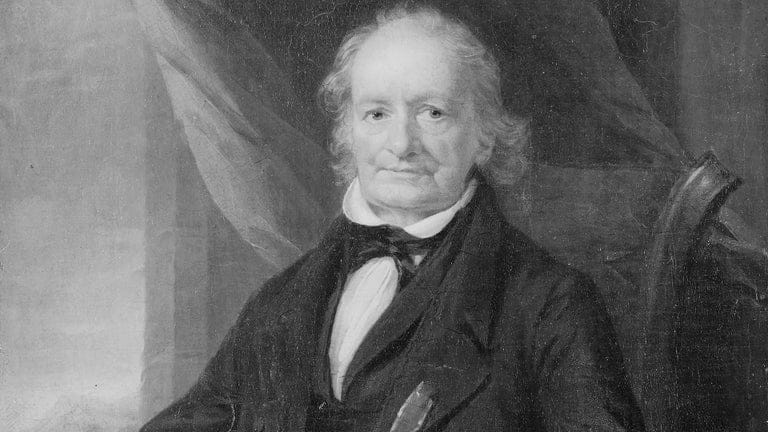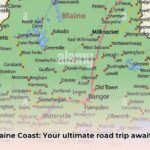While Plymouth Rock is etched in American memory as the landing site of the Pilgrims, a lesser-known but equally compelling story unfolds at George Popham Beach, Maine. Here, over a decade before the Mayflower’s arrival, the first English colony in New England took root, only to vanish into the mists of time. Join us as we unravel the mysteries of the Popham Colony, a tale of ambition, struggle, and the enduring allure of the New World.
George Popham Beach: Where History Predates the Pilgrims
Imagine stepping back to 1607, a time when the coastline of Maine was a tapestry of dense forests and pristine beaches untouched by European influence. It was here, at the mouth of the Kennebec River, that a group of English explorers, led by the determined Captain George Popham, established Fort St. George and dared to dream of a permanent settlement. Unlike the later Pilgrims, seeking religious freedom, the Popham colonists were driven by a thirst for new trade routes, valuable resources, and the expansion of the English empire.
Life in this fledgling colony was far from idyllic. Harsh winters, scarce food, and strained relations with the native Abenaki tribes posed constant challenges. The colonists struggled to adapt to the unfamiliar environment and the harsh realities of life on the edge of the known world. Adding to their woes, the winter of 1607-1608 proved particularly brutal, claiming the life of George Popham himself.
Despite these hardships, the Popham colonists accomplished a remarkable feat: they built the Virginia of Sagadahoc, the first English ship constructed in North America. This achievement, a testament to their ingenuity and perseverance, stands in stark contrast to the struggles that ultimately led to the colony’s demise.
With their leader gone, supplies dwindling, and morale plummeting, the colonists made the agonizing decision to abandon their settlement in 1608 and return to England. Their dream of a thriving English colony at Popham Beach was, for now, extinguished.
Captain George Popham: Unveiling the Importance of a Forgotten Pioneer
While his name may not resonate as loudly as those of later colonial figures, Captain George Popham played a pivotal role in the nascent days of English colonization in America. More than just a merchant seeking fortune, Popham, as President of the colony, embodied the aspirations and challenges faced by those who dared to venture into the unknown.
Born in Somerset, England, in 1550, Popham’s life before the New World remains shrouded in mystery. However, his position as Customer of Bridgwater Port suggests a man of some standing and responsibility. His family connections, particularly his uncle, Lord Chief Justice Sir John Popham, who played a key role in securing the charter for the Plymouth Company (responsible for the Popham Colony), shed light on the complex web of political and economic forces driving early colonization.
Popham’s leadership during the colony’s brief existence, though ultimately unsuccessful, left an undeniable mark on the course of history. The colonists, under his guidance, served as unwitting pioneers, testing the waters of the New World and providing invaluable, albeit harsh, lessons for those who would follow. The success of later settlements, such as Jamestown and Plymouth, can, in part, be attributed to the knowledge gained from the Popham Colony’s trials and tribulations.
Unlocking the Mystery of Popham Colony Mortality
One of the most intriguing aspects of the Popham Colony’s story lies in the uncertainty surrounding its death toll. While official records attribute only one death to the colony – that of George Popham himself – other sources paint a more complex and potentially tragic picture.
Abenaki oral histories, passed down through generations, tell of an attack on the colony that resulted in the deaths of eleven colonists. These accounts, though difficult to verify through traditional historical records, underscore the importance of considering indigenous perspectives and the limitations of relying solely on European documentation.
Factors such as the colony’s short lifespan, the challenges of accurately recording information in such a harsh environment, and the potential for bias in colonial records make it likely that the true number of deaths remains unknown.
The construction of the Virginia of Sagadahoc, while a testament to the colonists’ skill, may have come at a cost. Did the focus on shipbuilding detract from fortifying their defenses or securing adequate resources, potentially contributing to their vulnerability?
What Happened to the Popham Colony?
The demise of the Popham Colony, like many failed settlements of that era, resulted from a confluence of factors. While the death of George Popham undoubtedly dealt a blow to morale and leadership, other challenges played a significant role.
The “starving time” experienced by the colonists, documented in historical accounts, indicates that securing enough food was a constant struggle. The harsh winter of 1607-1608, with its “thunder, lightning, rain, frost, snow all in abundance,” likely exacerbated food shortages and exposed the colonists to harsh conditions for which they were ill-prepared.
The death of Sir John Popham in England may have also contributed to the colony’s downfall. As the primary financial backer, his passing could have led to a funding shortage, making it impossible to sustain the struggling settlement.
Adding to the colony’s woes, Raleigh Gilbert, Popham’s second-in-command and designated successor, inherited land in England shortly after Popham’s death. This timely inheritance, coupled with the hardships faced in the New World, likely tipped the scales in favor of abandoning the colony and returning home.
The story of the Popham Colony serves as a poignant reminder that the path to colonization was fraught with challenges and that even the grandest ambitions could be dashed against the unforgiving realities of the New World. It also highlights the importance of considering diverse perspectives—English, indigenous, and archaeological—to gain a fuller understanding of this pivotal chapter in American history.
Internal Links:
If you’re curious about the final resting place of John Wilkes Booth, who played a notorious role in the assassination of President Abraham Lincoln, then click here.
There are two beautiful beaches in Maine with similar names. To learn more about the differences between George Popham Beach and Popham Beach, click here.
Planning a trip to Montana? You might want to visit Yaak, a stunning and serene town nestled in the northwest corner of the state. Click here for more information.















